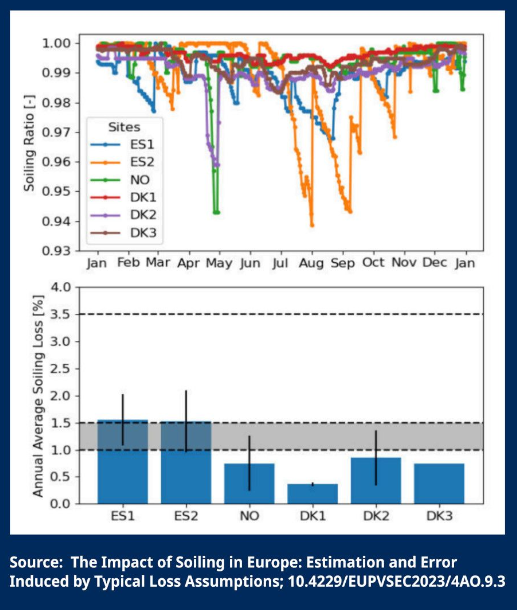When and why should solar systems be cleaned ? How to choose ?
The importance of cleaning photovoltaic systems is crucial to maximizing their energy yields. The accumulation of particles such as dust, pollen or bird droppings on solar modules can lead to significant losses in energy production. These losses vary according to various factors such as the geographical location of the project, weather conditions and environmental activities.
It is difficult to quantify the impact of these losses precisely, but a common approach is to estimate fixed values based on rainfall levels and cleaning frequency. For example, losses can vary from 0.4% to 2.5% depending on annual precipitation levels and cleaning practices.
Revenue losses are also influenced by fluctuations in energy prices, with significant increases observed between 2021 and 2022. Cleaning photovoltaic installations can therefore be profitable, but it is essential to consider the cost of cleaning in relation to the potential savings generated by increased energy production.
In terms of recommendations, it is advisable to clean installations during dry periods, as bird droppings may not be effectively removed by rain. The frequency of cleaning will also depend on energy prices and local environmental conditions. In many maintenance contracts, annual cleaning is commonly recommended.
In conclusion, choosing the right cleaning strategy can have a significant impact on energy savings and revenues for PV plant owners. By taking into account local factors and the costs associated with cleaning, it is possible to optimize the energy and economic yields of solar installations.
Read more here.
Our loss calculator here.
